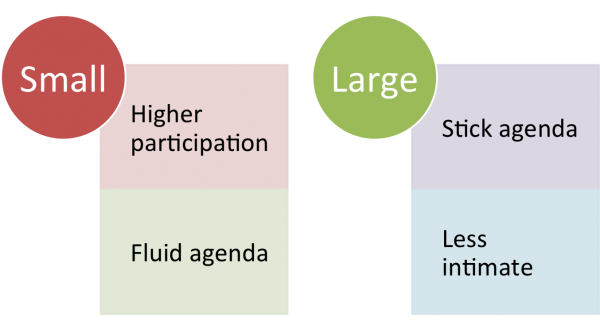The size of a meeting will greatly affect the proceedings.
Smaller meetings may be more informal, while larger meetings require greater organization. You need to be familiar with the differences between the two so you can adequately prepare. Any meeting with more than 50 attendees is considered a large meeting.
Small Meetings:
- There is a chance that everyone will participate.
- Procedures do not have to be explained unless they are formal.
- Personal opinions are more likely to be expressed.
- Agenda may be treated as more fluid.
- Attendees are more likely to be interested in the topic.
- 100% consensus is typically needed.
Smaller meetings are more intimate. The smaller venue encourages everyone to become involved, but people are more likely to go off topic.
Large Meetings:
- It is unlikely that everyone will be given an opportunity to speak.
- 80% to 90% is needed for a consensus.
- Voting and procedures likely need to be explained.
- Agenda needs to be strictly followed.
- Attendees are less likely to be invested in the topic.
- Personal opinions are less likely to be expressed.
Large meetings require a great deal of space, and they do not encourage teamwork or intimacy. Employees are more likely to lose interest during large, formal meetings. However, large meetings typically have fewer interruptions and stay on schedule.

